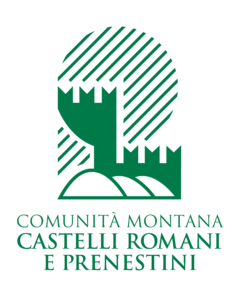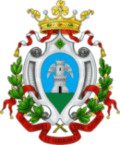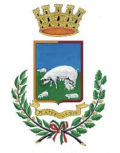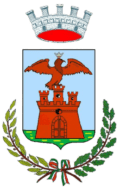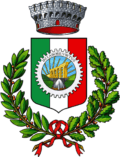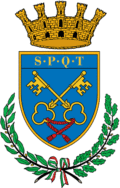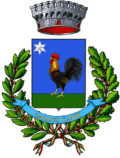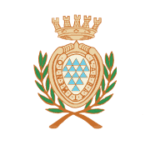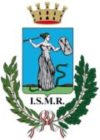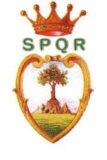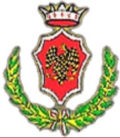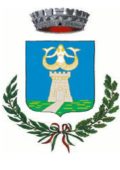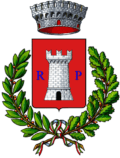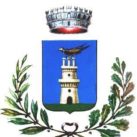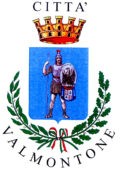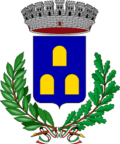GOVERNING ENTITY
Comunità Montana Castelli Romani and Prenestini
Established in 2001 as the result of the union of thirteen municipalities, the Comunità Montana Castelli Romani and Prenestini’s institutional purpose is to promote the socio-economic development of the territory and to restore balance to the living conditions of the mountain populations. It also protects and promotes the local culture and traditions and encourages the cultural and professional development of the area’s population. The Comunità Montana has ownership of the area in which the Archaeological Park of Tusculum is located.
Alatri
A municipality in the province of Frosinone, Alatri is one of the main cities of the Ciociaria and the third in the province in terms of population after Frosinone and Cassino. It is the ancient Aletrium, one of the oldest towns in Lazio, which was one of the main cities of the Italic people of the Ernici and one of the so-called città saturnie. It is part of the System with its Civic Museum.
Albano Laziale
A municipality of the capital city of Rome, Albano Laziale is one of the largest towns of the Colli Albani. Home of the Castra Albana, the encampments of the Legio II Parthica ordered by Emperor Septimius Severus, it has been a suburbicarian bishopric since the 5th century and a historic principality of the Savelli family. It is part of the System with its Civic Museum of Villa Ferrajoli and the Museum of the Second Parthian Legion.
Artena
A municipality in the metropolitan city of Rome, Artena developed from the 12th century under the name Montefortino, and took its current name in 1873. Archaeological excavations carried out near the town have revealed the existence of a town of pre-Roman origin built before the 8th century B.C. whose imposing cyclopean walls still remain. It is part of the System with its “Roger Lambrechts” Civic Museum.
Castel San Pietro Romano
A municipality of the metropolitan city of Rome, Castel San Pietro Romano stands on the extreme western foothills of the Prenestini Mountains in a dominant position with respect to the city of Palestrina. In 2017, it was included in the association ‘I borghi più belli d’Italia’ (Italy’s most beautiful villages) and in 2019 received the award of ‘Borgo più bello del Mediterraneo’ (Most Beautiful Village in the Mediterranean). Its Museo Diffuso is part of the System.
Colleferro
A municipality of the metropolitan city of Rome with settlements in the area present since the Bronze and Iron Ages, Colleferro experienced substantial development in modern times which was made official in 1935 with the founding of the municipality and the new urban centre. It is part of the System with its Archaeological Museum of the Toleriense Territory.
Colonna
A municipality of the metropolitan city of Rome, Colonna is the smallest of the Castelli Romani. The name is said to derive from the imposing remains of a handful of columns from the ancient Roman centre, ruins that most certainly remained standing until the controversial attribution of this name to ancient Labicum. The municipal territory includes the Colonna Station Railway-Museum.
Fondazione Museo per la Stazione di Colonna
Strongly desired by Giuseppe Arena, the ‘Fondazione Ferrovia – Museo della Stazione di Colonna’ (Railway Foundation – Colonna Station Museum) was set up thanks to the initiative of a group of enthusiasts with the intention of creating a museum in the old Colonna station along the Rome-Fiuggi railway line which has been closed since 1983. Today, the foundation manages, curates and promotes the museum of the same name, which is part of the System.
Frascati
A municipality of the metropolitan city of Rome, imposing villas stood in Frascati’s territory in Roman times, while the present urban centre originated following the medieval destruction of the city of Tusculum. During the Renaissance it once again became the summer residence of nobles and pontiffs, a period in which the enchanting Ville Tuscolane were built. It is part of the System with the Tuscolano Museum of the Scuderie Aldobrandini.
Gallicano nel Lazio
A municipality of the metropolitan city of Rome located at the foot of the Prenestini Mountains, Gallicano nel Lazio was the ancient Pedum in Roman times. It stands on a tuff hill surrounded by the gorges of two streams which are crossed by the remains of the arches of the Claudian Aqueduct. It is part of the System with the Route of the Roman Aqueducts and the Castle of Passerano.
Gavignano
A municipality of the metropolitan city of Rome, Gavignano stands on a promontory at the meeting point of the Rio and Sacco rivers in the Lepini Mountains. Of Roman origins, the site developed during the medieval period of Monasticism and Abbeys with the building of the first fortified castles and abbeys, and then flourished during the Renaissance. It is part of the System with the Museum of Rural Life.
Genazzano
A municipality in the metropolitan city of Rome located on the border between the provinces of Rome and Frosinone, Genazzano stands on a narrow spur of tuff. Known since ancient Roman times, the village was established in the 11th century and later became a historical fief of the Colonna family. It is part of the System with the Colonna Castle.
Lanuvio
A municipality of the metropolitan city of Rome, Lanuvio’s urban centre was built on the site of the ancient Lanuvium and subsequently developed in the Middle Ages with fortifications still visible in the towers and remains of the city walls. Contested by the noble families of the Cesarini, Colonna and Orsini, it was the focus of considerable architectural and artistic work during the Renaissance. It is part of the System with its Civic Museum of Lanuvio.
Monte Porzio Catone
A municipality of the metropolitan city of Rome, Monte Porzio Catone is characterised by a built-up area elevated on a hill upon which the historic centre is located. From being an area where imperial villas flourished, it witnessed a consolidated settlement in the Middle Ages following the destruction of the city of Tusculum until becoming a Borghese fiefdom in the 17th century. It is part of the System with its City Museum and the Barco Borghese Archaeological Complex.
Olevano Romano
A municipality of the metropolitan city of Rome, Olevano Romano stands on Monte Celeste on the edge of the Prenestino-Lepino-Ernico mountain ranges. The remains of the polygonal walls bear witness to the Roman origin of the settlement, while the Colonna Castle built on the high limestone spur is evidence of the medieval phase. It is part of the System with its Civic Museum of Art.
Palestrina
A municipality of the metropolitan city of Rome, Palestrina rises on the slopes of Monte Ginestro and on the ancient Praeneste, a Latin city famous in ancient times for the Sanctuary of Fortuna Primigenia. Its strategic position dominating the Valle del Sacco favoured its flourishing, as witnessed by the construction of a forum and the monumentalisation of the oracular sanctuary dedicated to Fortuna Primigenia.
Poli
A municipality of the metropolitan city of Rome, Poli is located in a large naturalistic area that stretches from the Monti Lucretili to the Monti Prenestini via the Monti Tiburtini. The village, which lies at the foot of Monte Guadagnolo, originated from Castrum Poli or Castrum Pauli and traces its origins back to the early Middle Ages when it was a possession of the Benedictine Monastery of Clivo di Scauro in Rome for a considerable period.
Rocca di Cave
A municipality of the metropolitan city of Rome, Rocca di Cave is one of the smallest municipalities in Italy in terms of number of residents. An ancient territory of the Latini, it is located on the southern slope of the Monti Prenestini. The town centre is dominated by the Rocca, from whose terraces one can observe an extraordinary panorama that stretches from the Tyrrhenian coast to the Apennine mountain chain. It is part of the System with its Geopaleontological Museum and Ardito Desio Astronomical Observatory.
Rocca di Papa
A municipality of the metropolitan city of Rome, Rocca di Papa’s modern settlement emerged during the Middle Ages, but had pre-existing settlements from the 1st millennium B.C. located on Monte Cavo, the ancient Mons Albanus sacred to the Latini, on whose summit the temple of Jupiter Laziale stood. In the medieval period, Rocca di Papa was a fief of the Counts of Tuscolo, the Annibaldi, the Orsini and finally, the Colonna. It is part of the System with its Geophysical Museum.
Rocca Priora
A municipality of the metropolitan city of Rome, Rocca Priora is the uppermost municipality of the Castelli Romani. Many historians identify the location of the town as the ancient Latin centre of Corbium which Coriolanus occupied on his march on Rome. A medieval possession of the Counts of Tuscolo, who rebuilt the baronial castle that had belonged to the Annibaldi family, it passed to the Savelli and later to the Rospigliosi. It is part of the System with its Monsignor Francesco Giacci Cultural Centre.
Valmontone
A municipality of the metropolitan city of Rome, Valmontone’s territory falls within the catchment area of the Upper Valle del Sacco. The territory of Valmontone has been inhabited since antiquity and was a place of transit on the Via Labicana. Developing into a castle in the medieval period with the powerful family of the Counts of Valmontone and Segni, it witnessed the flourishing of the town centre with the construction of exquisite buildings and architecture in the 17th century with the arrival of the Pamphilj. It is part of the System with the Palazzo Doria Pamphilj Museum.
Zagarolo
A municipality of the metropolitan city of Rome, Zagarolo represents the southernmost offshoot of the Monti Prenestini and stands on a tuff hill about two kilometres long, and is flanked by two valleys and surrounded by woods. The settlement, already populated in Roman times, was established as a fortified castle in the 12th century by the Colonna and later by the Rospigliosi. It is part of the System with its Toy Museum.
The Dioceses
The Suburbicarian Diocese of Albano
The oldest evidence of the Christian past of this diocese is found in the Liber of Pope Sylvester I with the building of a basilica dedicated to St John the Baptist by Emperor Constantine I. Today, the diocesan territory includes thirteen municipalities in the Metropolitan City of Rome, two in the Province of Latina and the urban area of the Municipality IX of the Capital. It is part of the system with the Diocesan Museum of Albano.
The Suburbicarian Diocese of Palestrina
The oldest evidence of the Christian past of this diocese is the martyrdom of Agapitus, the saint to whom the Cathedral of Palestrina is dedicated. Today, it is made up of sixteen municipalities in the Metropolitan City of Rome and two in the province of Frosinone. It is part of the System with the Palestrina Diocesan Museum of Sacred Art.

